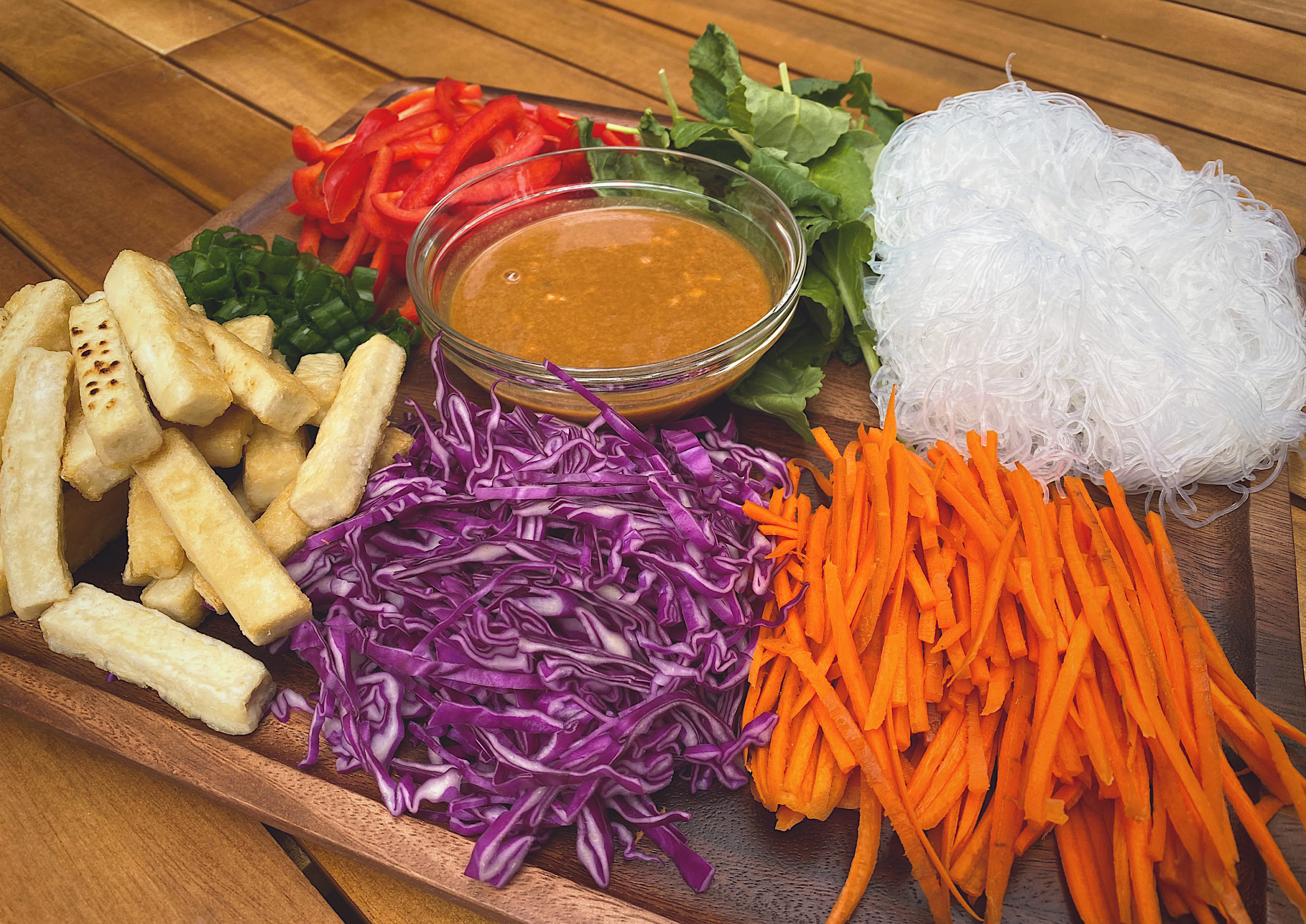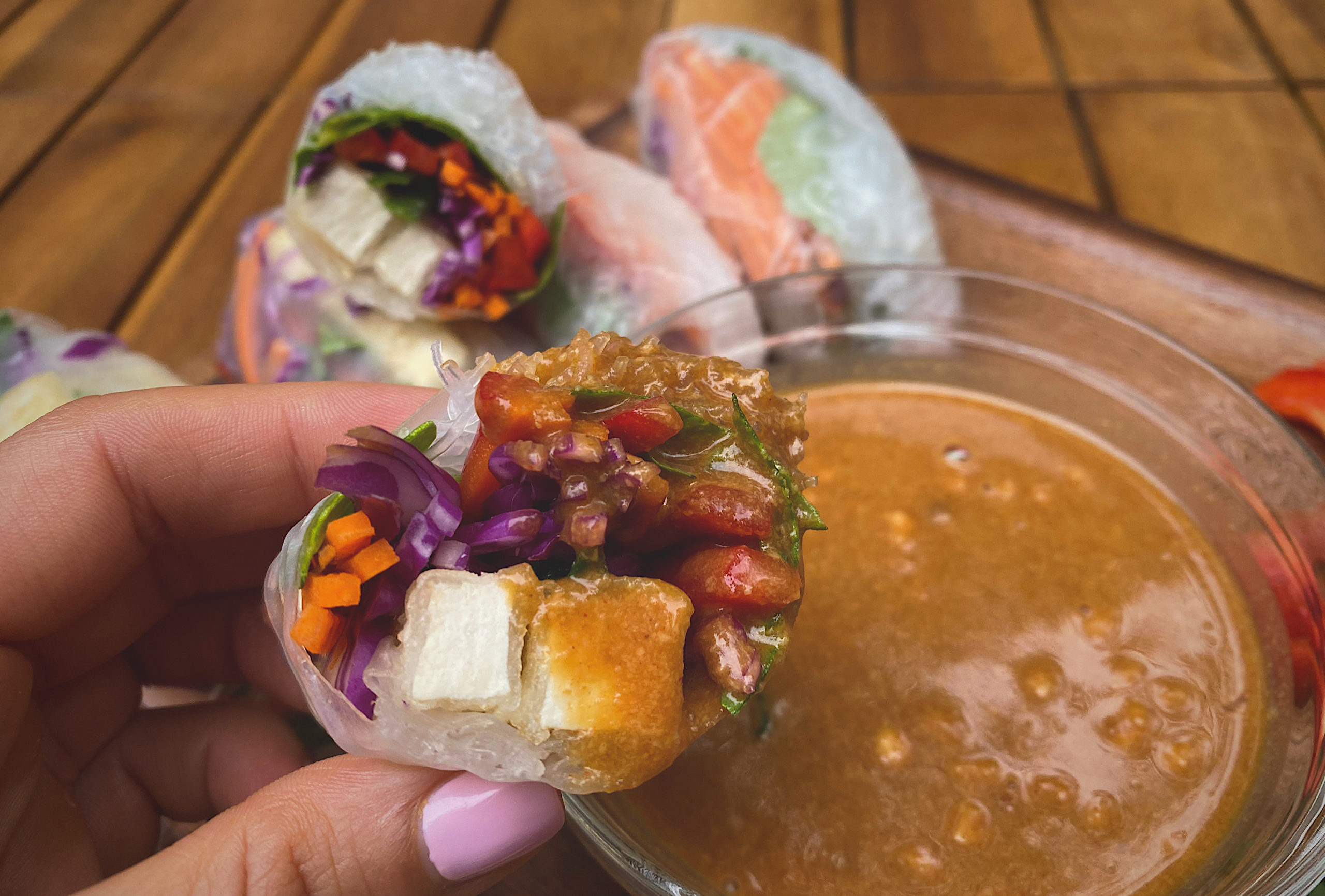Hi! This is Rita Shushy Setrakian, Kate Scarlata’s intern for the next few weeks. I am a dietetic intern at Teachers College, Columbia University, where I also earned my Master’s of Science in nutrition education. I’m here to share a low FODMAP recipe with you using firm tofu!
But before we get to cooking, let’s discuss – what’s the real deal about soy and a low FODMAP diet?
There’s a misconception that all soy foods should be avoided when on the low FODMAP diet, but this isn’t the case! There are many soy-based foods that are considered low FODMAP during the elimination phase, including: firm tofu, tempeh, soy cheese, soy sauce, edamame and miso, to name a few. For more on soy and the low FODMAP diet, click on this Soy Connection article by Kate Scarlata, MPH, RDN here.
So why are some soy foods lower in FODMAP than others?
Food processing, fermentation, and the maturity of the plant can impact the FODMAP content of soy foods. The FODMAPs in whole mature soybeans include oligosaccharides, both galacto-oligosaccharide and fructans. Oligosaccharides are water-soluble, as such they can leach into water utilized in food preparation methods such as the process of cooking and canning a soy product as well as in making firm tofu. For example, since more water is drained off of firm tofu when it is made compared to silken tofu, the firm tofu is lower in FODMAPs.
Soy foods that are made with the whole mature soybeans are higher in FODMAPs. When looking for soy milk, choose a variety that is made with soy protein only compared to one made with the whole soybean. Fermentation is another way to reduce the FODMAPs content of soy foods. When microbes are present in a food they can consume some of the oligosaccharides, reducing the amount in the final product. This is why tempeh, a fermented soy food is a lower FODMAP option. If you haven’t tried tempeh, it is easy to enjoy marinated, then baked for sandwiches, over salad greens or in a stir fry.
Tempeh is shown in the picture below on the far right.

If soy foods are still triggering IBS symptoms, consuming an alpha galactosidase digestive enzyme supplement can be beneficial. Alpha Galactosidase helps break down oligosaccharides into simple sugars for easier digestion. Prior to adding any supplements to your daily regimen, always discuss whether it is appropriate for you with your health care provider first. 
If following a low FODMAP diet, select an alpha galactosidase enzyme brand that does not contain other FODMAPs. Bean Assist is one option, while some Bean-O products contain mannitol, a sugar-alcohol, that is not suitable for someone following the low FODMAP diet.
Now for the fun stuff! Look at these colorful ingredients!
Check out this low FODMAP recipe, fresh and delicious spring rolls, using a popular soy food – firm tofu! Recipe is below! The dipping sauce is made with FODY foods low FODMAP Korean BBQ sauce. Note: Kate is FODY’s advisor but this is not a paid sponsored post
Ingredients
- ½ cup Fody Foods low FODMAP Korean BBQ sauce
- 1 tablespoon soy sauce
- ½ tablespoon fresh squeezed lime juice
- 1 ½ tablespoon peanut butter (creamy or crunchy, as you desire)
- 1 tablespoon Texas Pete Hot sauce (optional)
- 14 ounces extra firm tofu, drained and cut into strips
- ⅔ cup corn starch
- 3 tablespoons sesame oil
- 1 large carrot, peeled and julienned
- 1 medium red bell pepper, julienned
- 1/8th of a medium purple cabbage, shredded (~1 cup)
- 2 medium scallions, chopped (green part only)
- 1 cup baby kale
- 4.4 ounces (dry weight) vermicelli rice noodles, cooked according to package
- 12 rice spring roll wrappers, prepared according to package (prepare one at a time as you assemble each roll)
Instructions
- First, let’s start by preparing the sauce.
- In a medium mixing bowl, combine Fody Korean BBQ sauce, soy sauce, lime juice, peanut butter and Texas Pete Hot sauce.
- Whisk these ingredients together until the mixture is fully combined and smooth.
- You can then store the sauce in the refrigerator to chill until ready to serve.
- Next, let’s prepare the tofu.
- You can use a medium sized, flat plate, cutting board or even lay out a piece of parchment paper for this next step.
- Coat the cut tofu with corn starch in small batches. This will allow for better distribution of the corn starch.
- Place about a third of the tofu on cutting surface, keeping the pieces from touching each other - and sprinkle about 3 tablespoons of corn starch evenly over the tofu.
- Carefully press the corn starch onto the tofu, making sure all sides are coated.
- Use a pastry brush to remove excess corn starch.
- Set aside the coated tofu pieces on a different, clean medium sized plate, allowing for some space between each piece.
- Repeat this process for the remaining tofu.
- Once all of the tofu is coated, pan fry the pieces in 3 batches.
- Add 1 tablespoon of sesame oil into a medium pan, and heat turn over medium-high heat. Once the pan is hot, you can carefully add the tofu in batches, about 1/3 of the tofu per batch.
- You’ll know the pan is hot enough when you add a piece of tofu and it begins to sizzle immediately.
- Each piece should be cooked for about a minute on each side or until golden brown.
- Use tongs (preferably with a silicon edge) to gently flip each tofu.
- Once cooked, remove each piece of tofu and place on a medium sized plate.
- Repeat this process for the 2 other batches.
- Now, prepare a spring roll wrapper as per package instructions.
- Place a prepared spring roll wrapper on a medium size flat plate or parchment paper.
- Fill the rolls by placing some vermicelli noodles (about 2 tablespoons), a few carrot sticks, red pepper, cabbage, scallions and baby kale. Add about 2 pieces of tofu as well per roll.
- Stacking up the ingredients in a layering fashion will make it easier to roll; and keep in mind that you don’t want to overstuff it! A good rule of thumb is to add about a tablespoon of each of the vegetables.
- Begin rolling it up tightly as you pull the bottom up and over the filling.
- You can fold in the sides and use your fingers to tuck the filling in as you roll.
- Continue this process until you run out of wrappers and vegetables.
- You should end up with about 12 rolls.
- If you have any extra pieces of tofu, you can dip them into the sauce and enjoy separately; or use them over a salad the next day.
- After you are done assembling the rolls, cut in half, dip into the sauce and enjoy!




Terri Sidell
Hi, Thanks for sharing the Bean Assist info. What other digestive enzymes are there other than Lactaid for FODMAPS now??